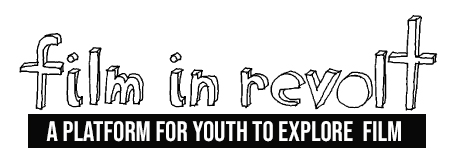One of the year’s hardest films to sit through, The Killing of a Sacred Deer is the latest effort from Greek director Yorgos Lanthimos. I loved his previous films, Dogtooth and The Lobster, both of which are extremely strange films – the latter being near-impossible to summarise. To try to describe Lanthimos’s style, I could say that it is like a more cruel, alternate-reality version of a Wes Anderson film – on drugs. The two directors both use symmetry, frank dialogue and purposely awkward line delivery. This new film is the second pairing of Colin Farrell and the director, who previously worked together on The Lobster. Alongside Darren Aronofsky’s recent outing, mother!, The Killing of a Sacred Deer ties for the most disturbing film I have seen all year.
The Killing of a Sacred Deer is a psychological thriller, following a surgeon and his family, and the relationship the surgeon builds with a boy who has recently lost his father on the operating table. That is all I will reveal about the plot, but as you can expect from Lanthimos, you will walk out feeling perplexed, crushed and in my case, nauseous – I live for this kind of cinema. Looking over some of my favourite films, I am drawn to movies where I am manipulated to feel like absolute garbage – like Requiem for a Dream and Irreversible, for instance. However, those films are straight-up dramas, which do not try to blend comedy into the mix. This film is very rare in the sense that both tragedy and comedy are so well balanced that it almost creates a genre of its own. You may wonder where someone could find humour in a film about stalking and sociopathy, but Lanthimos’s comedy does not come from snappy one-liners or punchlines. He instead creates sequences that make the audience so uncomfortable that they are forced to laugh at the sheer absurdity of it all. While myself and many other critics and fans loved this film, I can see a lot of people hating it, for the way it taunts and snarls at the audience – but – I also believe that this is the sort of filmmaking that is pushing cinema forward. It is a film that throws away any conventions or familiarities, and I never knew where it was going next.
What really struck me about his previous film, The Lobster, was the style in which the film was shot. Lanthimos tends to create shots with lots of headroom and usually likes to add in a small, creeping zoom to each shot. In the traditional sense, he creates very ‘ugly’ images, with very washed-out colours and no regard for traditional compositional laws. Similar to the way he tells his stories, Lanthimos doesn’t like to play by the rules, but he succeeds despite not conforming to how films are traditionally made. The Killing of a Sacred Deer is shot on glorious 35mm film, and features a lot more camera movement than his previous films, utilising the Steadicam to trail behind characters in hallways or walking paths. Lanthimos wears his influences on his sleeve here more so than in his other films, while still creating something original and profound. I saw hints of Michael Haneke’s Funny Games and most of all – I saw hints of The Shining. The slow zooms and use of the Steadicam in Sacred Deer are very Kubrickian, and are fundamental in building tension and suspense. The score is also fantastic, comprising of shrieking violins and occasional accordion cues. The filmmaking here is stellar and wholly original, and deserves to be studied in future years.
All of the performances are captivating, yet completely terrifying. Often, I would fall in love with a certain character and then slowly begin to hate them as the film progressed, which is a really hard thing to do naturally. This natural flow is a testament to the Cannes award-winning screenplay (co-written by Lanthimos and longtime collaborator Efthymis Filippou) and performances by Colin Farrell, Nicole Kidman and Barry Keoghan.
If I had to make a complaint about this film, I would say that it is overly long for its narrative. It could have been tighter and more compact, since the tension slowly started to wear thin. This is a film that will make you cringe from the very first frame (one of the most unique opening shots that I’ve ever seen), and will continue to make you wriggle about in your seat until after the credits close – and I loved it. In the words of my mum, who saw it with me: “I think I need a cup of tea after that!”
Written by Nick Ward (16), edited by Jessica Ellicott (as part of the Film in Revolt writing mentorship program). Image by Mischa (16).
